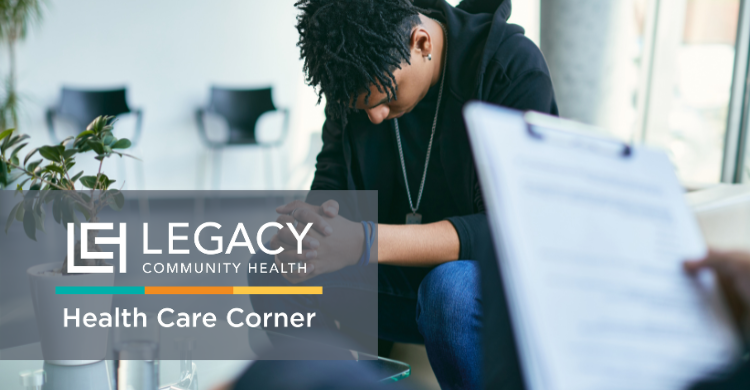TW: Mental health outcomes. Mental health is often overlooked in minority communities in the United States. Let’s change that.
Across the country, millions of people face the reality of living with a mental health condition. Each July, Legacy observes National Minority Mental Health Awareness Month to bring attention to the unique challenges that minoritized communities in the United States face regarding mental health awareness and access to behavioral health services. July may be behind us, but the conversation is ongoing year-round.
No one community is the same. Different people experience the gaps in mental health care in unique ways, sometimes due to the population they are a part of, but often also based on their personal diagnoses. Overall however, it is communities of color who systemically see the greatest gulf in access to mental or behavioral health care.
For Black and African American individuals, recent data shows that 1 in 3 adults with mental illness receive treatment. Additionally, only 35% of Hispanic/Latine adults with mental illness receive treatment each year. Among Asian Americans and Native Hawaiian and Pacific Islanders, 42% of Native Hawaiians and Pacific Islanders and 31% of Asian Americans had difficulties accessing services, citing cost, lack of insurance and not knowing their options. Data newer than 2018 couldn’t even be found for Native American adults.
“Awareness of the disparities in minority mental health access remains essential year-round. As providers, we must focus efforts on addressing and reducing both barriers to access and the stigma surrounding mental health issues. I often emphasize to my patients and their families the critical importance of prioritizing their mental health,” says Roma Bhatt, Licensed Professional Counselor Supervisor at Legacy.
A report from the Centers for Disease Control and Prevention (CDC) looking at mental health and suicidal behaviors from 2011 to 2021 indicated that 13% of high school girls had attempted suicide (30% had seriously considered it). That jumped to more than 20% for LGBTQ+ teens (45% had seriously considered it).
The most alarming trend uncovered in this report was a sharp rise in suicide among Black youth ages 10 to 24. In this group, the suicide rate increased 36.6% from 2018 to 2021. Native American youth have even higher rates of suicide, with a rate of 36.3 per 100,000 in 2021. For White youth, the rate in 2021 was 12.4 per 100,000, compared with 7.9 for Hispanic or Latino youth and 9.4 for Asian youth.
“The data is a clear call to action to support the mental health and well-being of racial and ethnic minority communities,” adds Bhatt. “Having these conversations openly between clinician and patient helps both parties advocate for culturally sensitive care and supportive networks tailored to the needs of the individual. It’s crucial to raise awareness, combat stigma, explore mental health resources, and continue our efforts throughout the year with compassion and understanding.”

